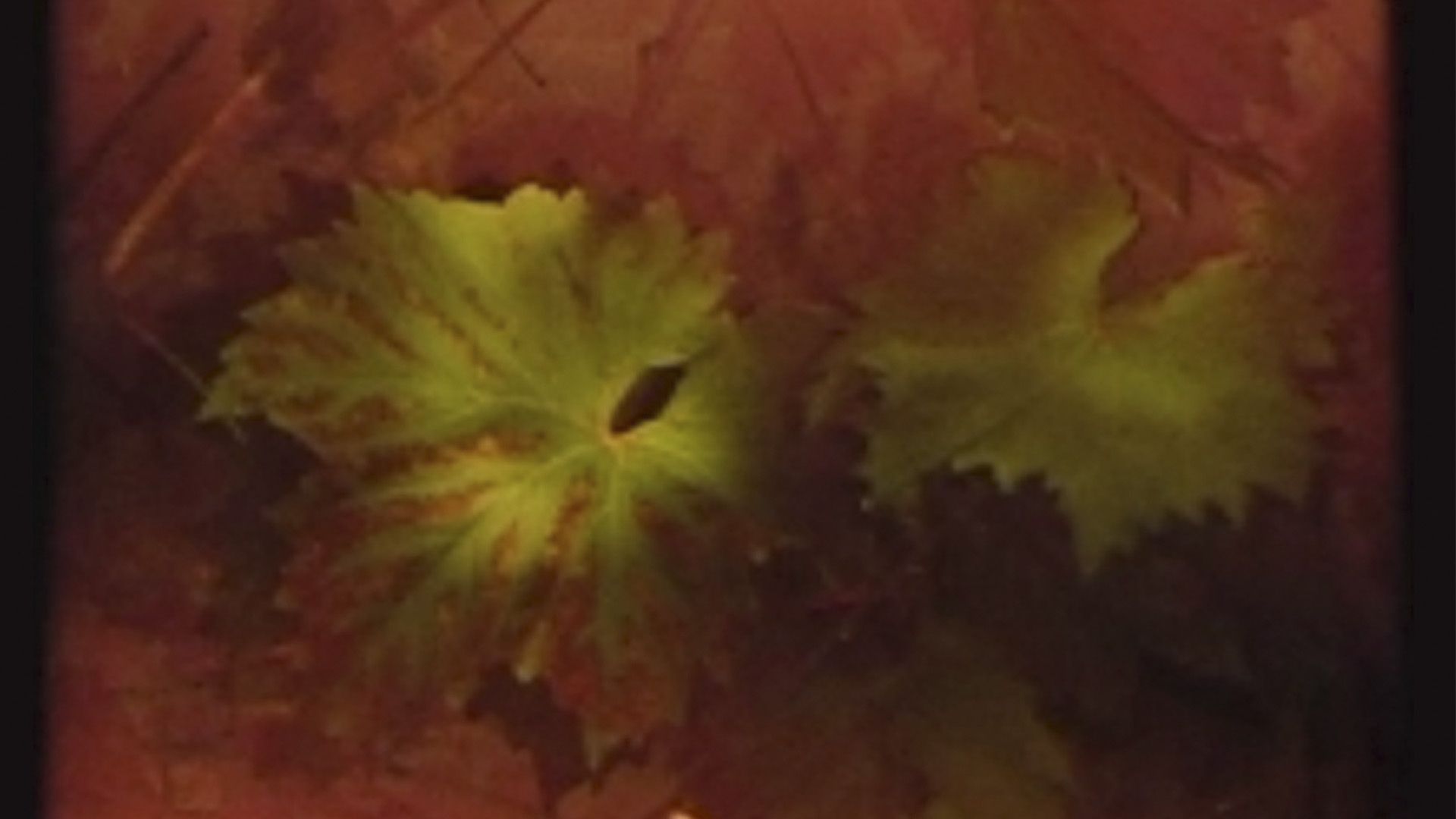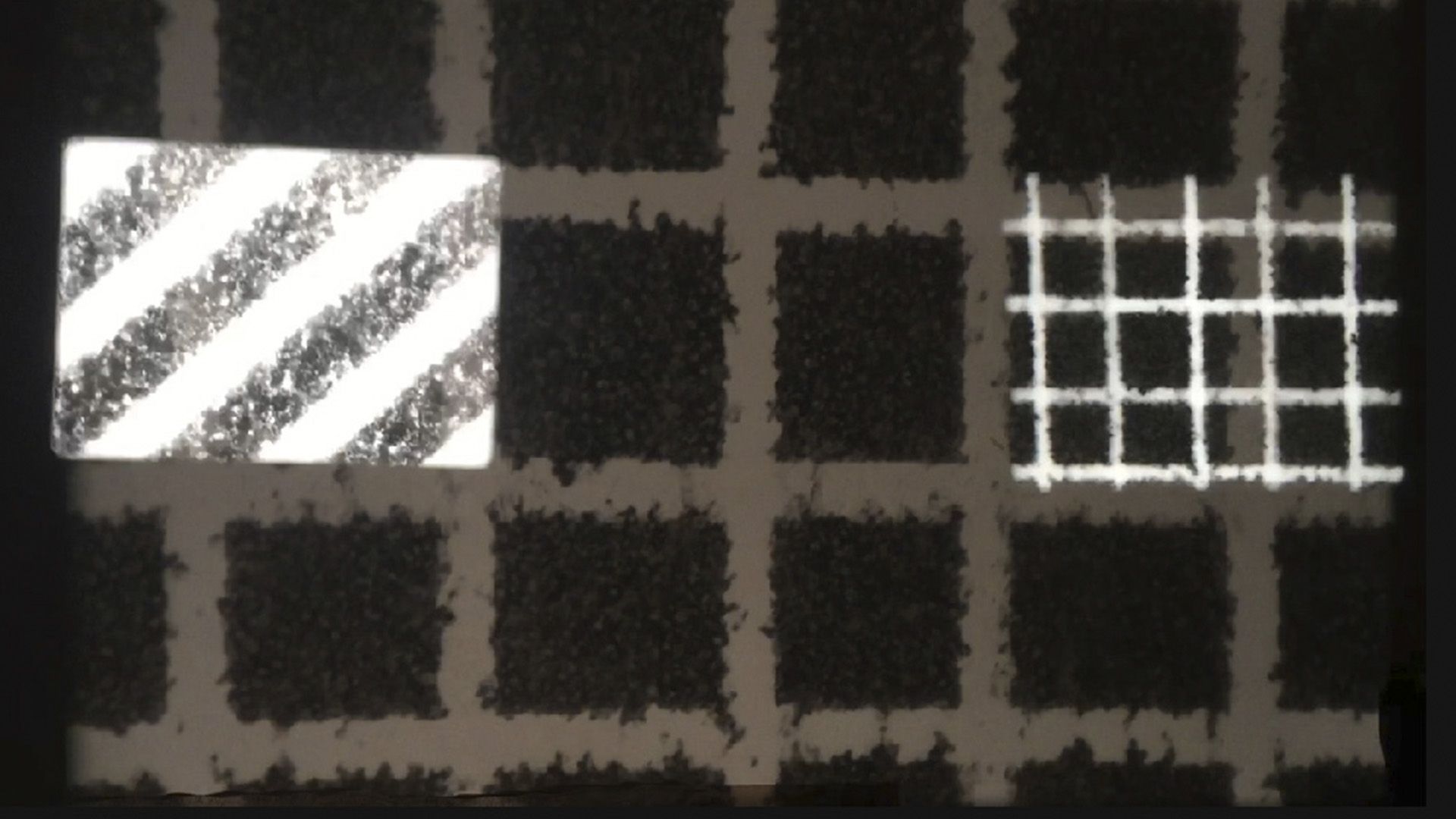LYNN LOO
DESBORDAMIENTOS. INCIDENTAL INTENTIONS
Fundación Luis Seoane | Friday June 7th | 11:00 p.m. | Free entry to all venues until full capacity.
Each work begins with a curiosity –what-would-happen-if….? Then when the idea has taken some initial form on film, the next stage of exploration is understanding what is happening on the screen and then searching for a way to interpret, in my own temperament, and form this work. That is the outline description of my process. These expanded works often use abstract images. Broadly speaking they are patterns, spatial and rhythmic patterns. There are rules that I impose at the start but in the process of making I anticipate chance to emerge and effect decisions on how to further evolve and interpret the piece.
I gradually came to realize that my background in music may have subtly influenced my way of filmmaking. Both artforms have rules, structures and patterns. When combined, they bring a kind of certainty, resolution, and most of all beauty, to our human perception of these systems.
Lynn Loo
Originally from Singapore and currently based in London, Lynn Loo came to cinema with a background in music. She has been working on film since the late 90s, and she started her way on expanded cinema in the mid 2000s. Loo visited (S8) in 2011, where she showed her works in collaboration with Guy Sherwin. In this new visit, she brings us a couple of her earlier works in which she explores analog film materials and processes in multiple projector pieces, as well as her latest film performances, Washi MM, and her work in progress Asa No Ha.

END ROLLS
Lynn Loo | 2009 | United Kingdom | 3 × 16 mm | 12 min
When a roll of motion picture colour print film is returned from the lab, it always begins with a long leader and then a brief few seconds of a flux of colour appears before it transforms into the first image on screen. This also happens when the image fades away at the end of the roll. I wanted to capture that fluctuation of colours.
A roll of colour negative was laced in a film camera and then exposed at random intervals to various lights such as candle light, stove light and radio light. Copies were made from the lab with instructions to strike different light exposures for each print. These copies are then projected on three separate projectors.
The sound is captured using photo-resistors that react to the light fluctuations in the film.
Taking advantage of the different rhythms of the projectors, the identical copies will play at different times, providing again a chance interplay, as with the sound. (Lynn Loo)

AUTUMN FOG
Lynn Loo | 2010 | United Kingdom | 2 × 16 mm | 12 min
When I started living in London it was my first time having a garden and the first time I experienced seasonal changes in the garden, most strikingly during Autumn. I wanted to capture these changes and to see what would materialize through use of a film camera. Rules were set when I started filming. Shots have to be stationary, there has to be movement from a light breeze, and then light and shadow.
The camera negative and print were returned from the lab and from them the idea of projecting both together with screens overlapping developed. This in turn led to the occasional live projector manipulation and addition of colour filters. (Lynn Loo)

WASHI MM
Lynn Loo | 2017 | United Kingdom, Japan | 3 × 16 mm | 15 min
I first saw Mary Martin’s drawings in a gallery in London. One that especially struck me was Drawings for Expanding Permutation, 1969, pen on paper. Imagining how she drew them, the patterns, lines, white and black are like light and shadow, I wondered how to interpret them onto film. Her son Paul Martin knew of my interest and kindly gave me a catalogue that contained the drawing which I used as inspiration to create this work.
I found Washi masking tape in a shop that came with various shapes and lines.
Cutting these tapes into different lengths, adhered onto both sides of a strip of clear film at different intervals, creates visual rhythms. The tape is also adhered at intervals to the soundtrack edge of the film.
After a few hundred feet of sticking washi tape onto clear film, I made copies on a homemade contact printer and self processed the film. Three copies were made and used in the final work. Washi MM uses three projectors, and making use of the innate difference of speed in each projector, the films do not sync, giving an additional element of rhythm to the work. (Lynn Loo)
Thanks to:
Arts Council England | The Great Britain Sasakawa Foundation

ASA NO HA
Lynn Loo | 2024 | United Kingdom, Japan | 2 × 16 mm, 1 x DV projector | 1 min
In Kanuma, I was introduced to Kumiko by a craftsman. Kumiko is a Japanese traditional craft of assembling ultra-thin fine wood pieces without nails, forming geometric patterns that have been used for hundreds of years. Asa no Ha (Hemp leaf) is one of the most recognisable patterns. Listening to Toyoda-san, the basics of Kumiko is the use of equilateral triangles. It has to be precisely 60 degrees on all sides or it will not work. Thinking about producing a film work from this, I remembered Steve Farrer’s 10 Drawings, which laid out strips of clear film into a grid. I decided to borrow this idea to draw on clear film and scratch on black film Asa no Ha, with in mind image and sound. This is a work-in-progress. (Lynn Loo)
Thanks to::
The Great Britain Sasakawa Foundation
